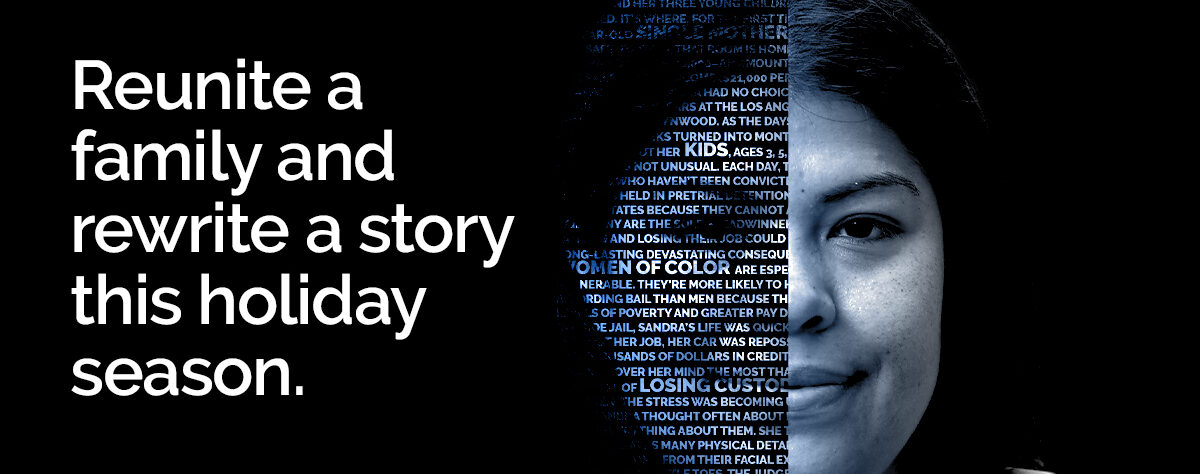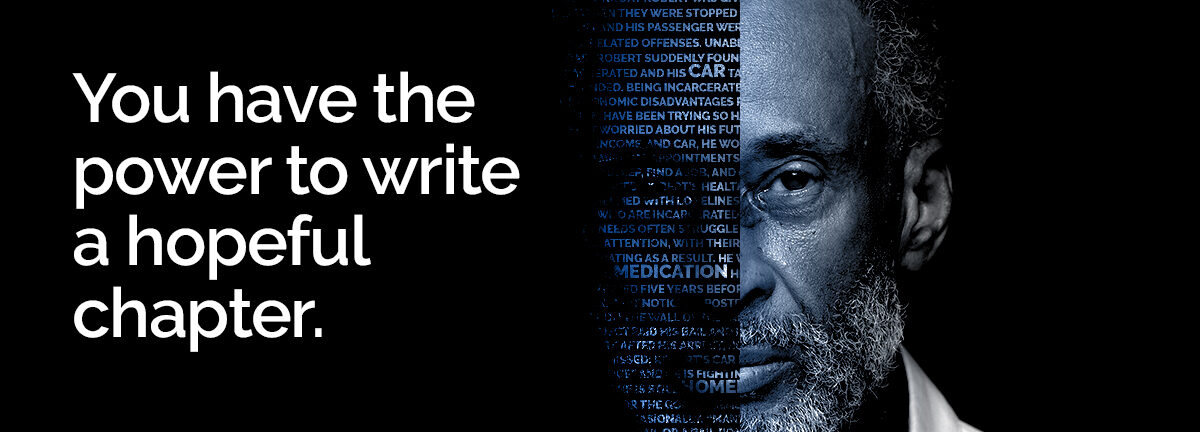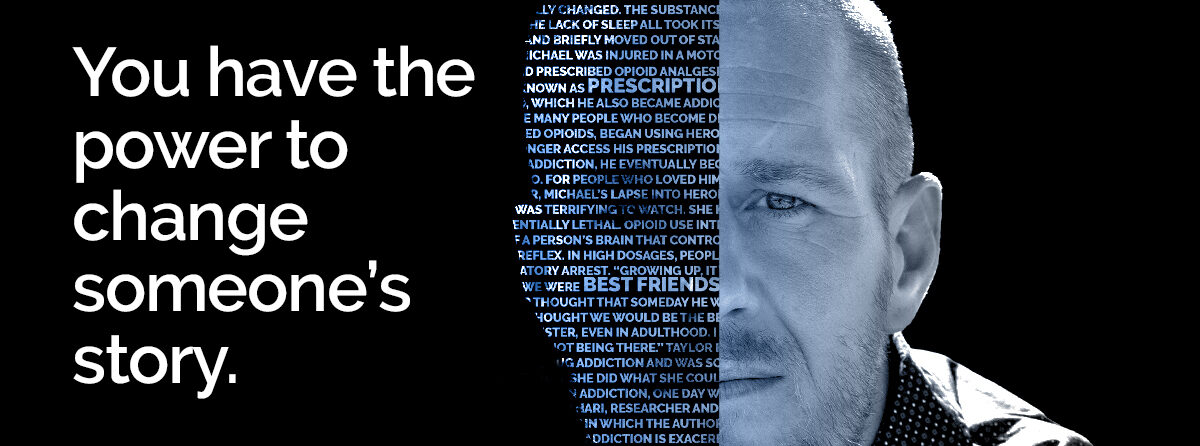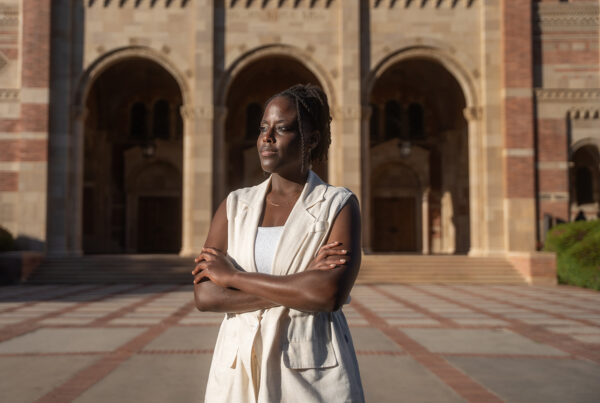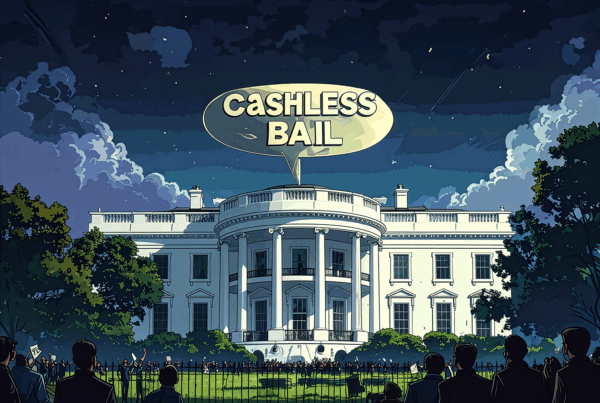Fear, not facts, drives a federal push to restore cash bail in D.C., threatening local autonomy and hard-won pretrial reforms.
Violent crime has dropped to its lowest level in more than thirty years in Washington, D.C. Homicides are down roughly thirty percent from last year, and reports of robbery, assault, and burglary are falling even faster. The city’s trajectory mirrors the national one: 2024 marked one of the safest years in modern U.S. history. And yet, the nation’s capital finds itself in the crosshairs of a federal crackdown.
In August 2025, President Donald Trump issued executive orders targeting what he called “dangerous cashless bail experiments,” singling out D.C, by name. The D.C.-specific executive orders declared a crime emergency, sent in the National Guard, and allowed the federal government to take over parts of local governance. A month later, the U.S. House and Senate advanced legislation that, if it becomes law, would mandate cash bail and pretrial detention for a broad range of offenses in the District of Columbia – part of a sweeping effort to reassert federal control over the city’s justice system.
To residents, it’s a familiar story: the District of Columbia’s self-governance colliding with the federal government’s power to overrule it.
The irony is that D.C.’s pretrial system – cashless for more than three decades – is widely regarded as one of the nation’s best. In 1992, the District became one of the first jurisdictions to effectively abolish cash bail, replacing it with a data-driven model focused on risk rather than wealth. Mirroring the federal system, judges decide whether someone stays in jail or goes home based on whether they pose a flight risk or a danger to the community – not on how much money they can post.
“The idea of reintroducing a money-based cash bail system has really not been on anyone’s radar,” said Hannah Milem, a staff attorney at the consumer-law nonprofit Tzedek DC, which safeguard the legal rights and financial health of D.C. residents with low incomes. “For thirty years, policymakers and residents have had the chance to change this law if they were dissatisfied. They haven’t – because it works better than cash bail.”
The Pretrial Services Agency of the District of Columbia oversees that pretrial system. It interviews defendants, runs background checks, and produces risk assessments to guide judges’ decisions. “Rather than just setting a financial condition of release and saying, ‘If this person can pay, they can go,’” Milem explained, “there’s a really extensive risk assessment looking at over forty factors.”
The results are striking: 92% of people released before trial by judges remain arrest-free. 87% appear for every court date. 86% complete pretrial release without a single compliance issue.
D.C.’s transformation didn’t happen overnight. The 1992 legislation that ended cash bail was the culmination of a decades-long push to make D.C.’s pretrial system fairer and more evidence-based. Reformers had long argued that the old model – where freedom depended on one’s ability to pay – deepened racial and economic inequities.

”Cash bail is both a financial justice issue and a criminal legal one. It’s in our wheelhouse because it’s about whether people are punished simply for being poor.
Hannah Milem
Milem pointed to that legacy when explaining why her organization entered the debate following the most recent action from the White House. “Cash bail is both a financial justice issue and a criminal legal one,” she said. “It’s in our wheelhouse because it’s about whether people are punished simply for being poor.”
No system is perfect. Occasionally, someone released will reoffend before trial, sometimes violently. Milem notes, however, data from the Pretrial Services Agency for D.C. (a federal agency) from the most recent nine months available shows that of the defendants released before their trial, only 1% have been rearrested for a violent crime, a 99% success rate on this metric.
Milem adds that detention is itself a harm. “Detaining people pretrial makes them more likely to lose their homes, lose their jobs, and face trauma,” she said. “All of that puts people in a worse position and does very little to address whatever harm may have occurred in the first place.”
The White House’s narrative of a “crime-ridden” D.C. plays on something very real – the anxiety that follows every headline about violence. But perception and reality have diverged: the data show a city that’s growing safer, not more dangerous. Violent crime is down 26% this year, and property crime is down even more. The gap between fear and fact is what allows punitive policies to take root.
For critics like Milem, the push to reinstate bail isn’t about public safety. “It’s a huge attack on D.C. residents and on Home Rule,” she said. “It makes a mockery of the will of D.C. residents and of what they’ve said they wanted.”
Because the District of Columbia is not a state, its autonomy is limited. Under the 1973 Home Rule Act, Congress retains ultimate authority over the District’s laws, and the President can seize control of D.C.’s Metropolitan Police Department for up to 48 hours during an emergency – longer with congressional approval. Only the President can deploy the D.C. National Guard.
That federal leverage allows the White House to use D.C. as a political stage – a symbol of urban disorder, even when the facts don’t support it. “D.C. is potentially the canary in the coal mine,” Milem warned. “What happens here could become a model for rollbacks elsewhere.”
Mayor Muriel Bowser, who has often favored more aggressive policing and expanded pretrial detention, struck a cautious tone after President Trump’s executive order. “I think frankly that [the current system] has worked better than any other,” she told reporters.
Milem worries that undoing it would be catastrophic. “It would be a huge upheaval,” she said. “D.C. hasn’t had a bail bond industry in decades. This would put a big flashing sign to those companies to set up shop here – and they prey on the families of people who are detained.”
The city’s racial wealth gap makes that prospect especially dire. “White families’ assets in D.C. are estimated to be about 81 times higher than Black households,” Milem said, citing Urban Institute data. “By definition, the people hit hardest by a cash bail system are those who can’t afford bail.”
That would mean jails filling again – fast. D.C.’s central jail is already over capacity and under scrutiny. A May 2025 audit by the Office of the D.C. Auditor described “dangerous, deteriorating conditions,” including sewage backups, broken toilets, mold, exposed wiring, and infestations. Eight people died in custody during the audit period – three times the national average.
“We’re already seeing an increase in the jail population since the law enforcement surge,” Milem noted. “It’s hard to imagine a scenario where this bill wouldn’t increase the number of people detained pretrial and the length of time they’re held.”
For Milem, the fight over bail reform is about more than procedure – it’s about democracy itself. “D.C. is also the protest capital of the country,” she said. “Anything that makes it easier to keep people in jail here affects their right to express themselves politically.”
The data are clear. The outcomes are clear. What remains unclear is whether the District will be allowed to keep doing what works. For more than thirty years, D.C.’s risk-based, pretrial system has rejected cash bail and quietly delivered what most cities only aspire to: high court attendance, low rearrest rates, and fairer treatment for people who can’t afford to buy their freedom.
Now, that model sits at the center of a political storm – one that has less to do with crime than with power.
“We all want safer, healthier communities. But taking away freedom from people who can’t pay doesn’t make anyone safer – it just makes injustice deeper,” Milem offers.
The question, in D.C. and beyond, is whether America still believes there’s another way.
Thank you for reading. The Bail Project is a 501(c)(3) nonprofit organization that is only able to provide direct services and sustain systems change work through donations from people like you. If you found value in this article, please consider supporting our work today.


